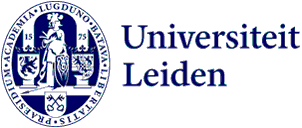Goals
At the end of the Computer Graphics course, the student should be able to
understand the theoretical/mathematical fundamentals in computer graphics
understand the programming fundamentals in computer graphics
understand the current strengths and weaknesses of 3D graphics algorithms
have insight into ray tracing algorithms
have insight into illumination and rendering
have insight into interactive line and surface models
have insight into high performance computer graphics software systems
have insight into theoretical and practical problems in computer graphics
build a computer graphics program
Description
The goal of this course is to create a foundation (theory and programming) for understanding the current and future technology underlying computer graphics. Our intention is to create a synergistic mixture of theory and practice. The first part of the class begins with introductory lectures into the mathematical fundamentals and workshops in programming 3D graphics. In the second half of the semester, the class moves to current state of the art methods which are presented by the students. Examples of typical subjects which will be covered are:
3D modeling
3D lighting & effects
Real time rendering
Advanced applications and systems
Prerequisites
The student should be fluent in C/C++ programming.
Literature
All educational materials are supplied digitally.
Optional reading: Computer Graphics Using Open GL by F. S. Hill, Jr. (Prentice-Hall, 2001 or later, ISBN: 0-02-354856-8) 2006 – 3rd Edition: ISBN-13: 978-0131496705
Research papers from recent ACM conferences and journals
Table of contents
Introduction to computer graphics and OpenGL
Mathematical fundamentals
Transformations: Translation, Rotation, Scaling
Homogeneous transformations
Viewports
Parallel, oblique, and perspective Projections
Line and surface representations
Hermite and Bezier modeling
Diffuse and Specular Shading
Ray Tracing
Hidden surface removal
Radiosity
Particle systems
High performance rendering algorithms
State-of-the-art research directions
Timetables
The most updated version of the timetables can be found on the students' website:
Work-forms
lectures
seminar
student discussions
presentations
software assignments
Examination
The final grade is composed of
Presentation and home work (30%)
Software assignments/workshops (20%)
Project or Exam (50%)
Projects are evaluated using guidelines similar to the Bachelor project:- Project work – level of difficulty, contributions and quality of ideas and implementation
- Project paper – scientific summary and assessment of project
- Execution – planning and systematic application of methods
- Presentation – clarity, knowledge, scientific assessment of the project
Sign-up
Subscribe via Usis Selfservice > Studentencentrum > Inschrijven. Activity codes can be found on the facultaire website
Contact
Onderwijscoördinator Informatica, Riet Derogee
Computer Graphics Main Website
Attendance is mandatory (for special situations, please consult with the teacher). Absence (without permission beforehand) will result in not passing the course.
